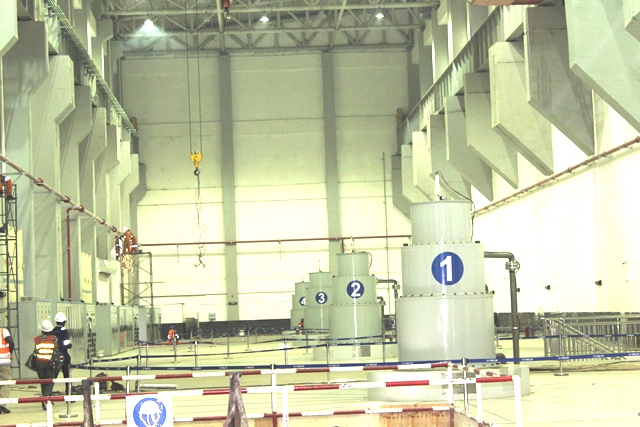Isimba power outage crisis raises questions about Uganda’s effective generation capacity

Uganda has announced a decision to import 60 Mw of electricity from Kenya following the outage of its 183Mw Isimba hydropower station on August 8. The outage has plunged the country into a power rationing schedule that officials say will last another three weeks.
Announced by Ms Ruth Nankabirwa, the minister for energy, the stopgap imports form part of a bridging plan by the ministry of energy, which will also see the injection into the grid, of 50Mw from a government-owned thermal plant on the outskirts of the capital and the purchase of another 20Mw from a co-generation plant owned by sugar miller Kakira Sugar Works.
Nankabirwa says the emergency shutdown at Isimba was occasioned by a water ingress incident on August 8, which left the powerhouse flooded.
“The shutdown was undertaken as a safety procedure to ensure safety of staff and protection of the electro-mechanical equipment. The Operator, Uganda Electricity Generation Company Limited UEGCL, is undertaking appropriate measures to restore power production and we expect generation to resume within three weeks,” she told media August 16.
She then revealed that off-taker Uganda Electricity Transmission Company Limited UETCL, had been authorized to import 60mw daily from neighbouring Kenya under a likely power-swap arrangement until the technical issues at Isimba are resolved. On the hand, UEGCL would optimize “the generation capacity of available power plants across the country, suspend any planned and non-emergency shutdown or outage permits.”
In tandem, UETCL and national distributor UMEME will also implement load shedding plan to balance power demand to ensure grid stability is achieved.
The development has exposed the dearth of problems plaguing Uganda’s power sector which has often claimed a huge gap between demand and generation capacity. Ideally, with a a combined 630Mw of installed capacity, the other three powerplants upstream of Isimba, coupled with 100Mw of thermal and nearly 120Mw of mini-hydros, should have been able to pick the baton from Isimba.
But a combination of restrictions on water releases for power production, unserviceable equipment and generation plants without transmission lines, meant the system is short of internal resilience. For instance, less than 280 Mw is available from the Kiira-Nalubale complex in Jinja while availability at the 250Mw Bujagali power station has average a paltry 69pc since it started operations a decade ago. One 50Mw unit was also undergoing scheduled maintenance at the time of the outage at Isimba.
The prolonged dry spell has also impacted the quantity of water available for generation officials say.
According to sources, Uganda has an effective generation capacity of just over 800Mw from an installed base of 1250Mw from hydro and thermal. Peak demand including dispatches for export average 790Mw.

 Brussels Airlines to announce Nairobi service
Brussels Airlines to announce Nairobi service
 SITA promises enhanced travel experience after Materna acquisition
SITA promises enhanced travel experience after Materna acquisition
 Saudia’s 105 aircraft order stretches A320neo lead over rival Max
Saudia’s 105 aircraft order stretches A320neo lead over rival Max
 Boeing refuses to pay hackers $200 million for stolen Data
Boeing refuses to pay hackers $200 million for stolen Data
 Uganda-Tanzania announce date for second joint business forum
Uganda-Tanzania announce date for second joint business forum
 Uganda Airlines leased A320 arrives in Entebbe
Uganda Airlines leased A320 arrives in Entebbe
